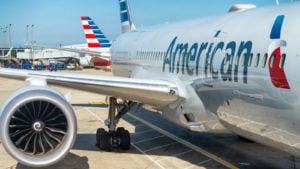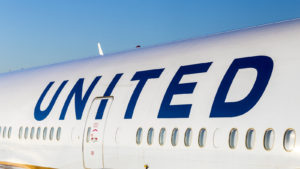For one, most grounded airline stocks are technically oversold at support, which we can walk through in just a month. About five billion people are expected to fly this year, which could result in another record year for the sector. And three, according to the International Air Transport Association (IATA), 2014 revenue could reach $996 billion this year.
In addition, the latest inflation report showed that airfares are dropping, which could convince more people to travel by air. In fact, according to the Federal Reserve Economic Data (FRED), airfare has been on the decline since February.
Plus, some airline companies, like Alaska Airlines (NYSE:ALK), are preparing for their “largest summer schedule ever.”
Given that, it just makes sense to consider buying some of the top airline stocks on the dip.
JetBlue Airways (JBLU)

After tailing at $7.50 resistance, JetBlue Airways (NASDAQ:JBLU) bottomed out at around $5. Now at $5.90, with plenty of upside remaining, I’d use the weakness as a buying opportunity.
For one, airline traffic appears to be gaining a good deal of momentum. Big investors are also taking advantage of JBLU’s weakness. For example, Carl Icahn bought 17.73 million shares at $6.49 at the end of March. Israel Englander’s Millennium Management increased its stake in JBLU by nearly 750% by adding another 1.23 million shares at the end of March.
Third, as noted by Barron’s, the company has embarked on a turnaround plan with CEO Joanna Geraghty, who promised to take “aggressive action” to return JBLU to profitability.
In addition, while the company recently posted an adjusted earnings per share loss of 43 cents on revenue of $2.21 billion, which missed estimates of $0.52 on $2.2 billion in revenue, that weakness appears to have been priced into the stock, too.
American Airlines (AAL)

American Airlines (NASDAQ:AAL) stock has been an absolute disaster.
However, after gapping from about $15 to a recent low of 511.16, I’d also use weakness as a buying opportunity. For one, it’s technically oversold on RSI, MACD and Williams’ %R. Two, the last time it became this oversold with those indicators, AAL bounced from a November low of about $11 to $16 just a few months later.
Triggering the latest downfall, American Airlines cut its adjusted EPS numbers to between $1 and $1.15 for the second quarter from a prior range of $1.15 to $1.45. Revenue per available seat mile is also expected to fall between 5% and 6%, worse than the 1% to 3% drop forecast initially.
However, this appears to have been priced into the latest pullback in the stock.
Again, with airline demand gaining momentum, I don’t expect AAL to stay this cheap for long €” especially with its price-to-earnings-growth ratio (PEG) at 0.28 and a price-to-sales ratio of just 0.15 at the moment.
United Airlines (UAL)

Oversold shares of United Airlines (NASDAQ:UAL) are a buy on weakness, too.
After plunging from about $545 to $48, UAL caught strong support and is starting to pivot higher. We’re also seeing RSI, MACD, and Williams’ %R slowly pivot from oversold conditions. From its last traded price of $49.18, I’d like to see UAL initially retest at $54.
Helping Citi analysts raise their price target on UAL to $96 from $80, with a strong buy rating. Jefferies also upgraded UAL to a buy rating with a price target of $65. The firm cited UAL’s investments in its product offerings and free cash flow generation as the reason for the move. Wolfe Research just upgraded UAL to an outperform rating, citing the potential for a big upside in the stock over the next six to 12 months.
Earnings have been solid here, too. In its first quarter, UAL’s revenue jumped 10.1% year over year. Total operating revenue was up 9.7% year over year to $12.5 billion. Passenger revenue per available seat mile was up 1% year over year.
On the date of publication, Ian Cooper did not hold (either directly or indirectly) any positions in the securities mentioned. The opinions expressed in this article are those of the writer, subject to the InvestorPlace.com Publishing Guidelines.
Ian Cooper, a contributor to InvestorPlace.com, has been analyzing stocks and options for web-based advisories since 1999.
